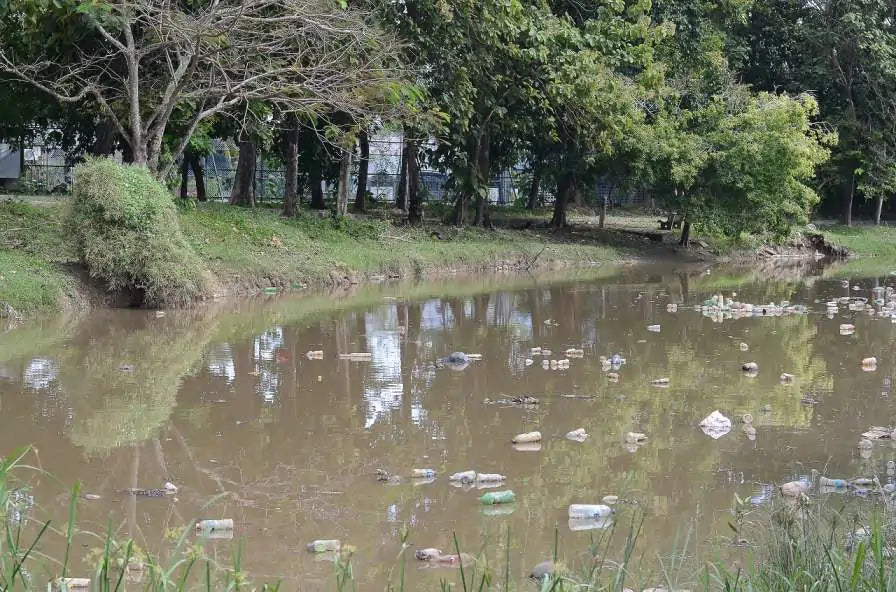Why not add these to compliment your wheelie bins?
Your basket is currently empty.
Shop NowWe guarantee to have the lowest price! Find the same bin for a cheaper price and we will beat it!

In the fight to keep our waterways and oceans free of litter, it appears that we are barely skimming the surface of the problem. Whether its trolleys at the bottom of our canals, or plastic particles floating in our oceans, we face a flood, rather than a trickle, of trash. So what is the true extent of the problem and who are leading the attempts to clean it up? Furthermore, what can we all do to help?

Items such as tyres and shopping trolleys are commonly found dumped in UK waterways. More unusual items are sometimes discovered too; examples have included an unexploded, Second World War hand-grenade and a Volkswagen Camper Van. This rubbish is certainly unsightly and potentially harmful to us, particularly when you consider the danger of chemicals ending up in our drinking water. However, the real victims of the crime are the nation’s water-dwelling wildlife, who frequently risk being trapped, poisoned and killed.
Central government and local authorities, in partnership with volunteer groups, such as The Canal and River Trust, and British Sub-Aqua Club, are spearheading the clean-up, but the total cost is frightening. The Canal and River Trust alone spend £1 million every year removing rubbish from our waterways, while many individual local authorities use hundreds of thousands of pounds of their own annual budgets too.
This is not just a domestic problem but a global one, and, in recent years, private companies have manufactured a series of innovative devices, to assist in the clear up. Trash boats, such as those made by Elastec and Water Witch, are manned and designed to skim floating litter from the water’s surface. This year has also seen the exciting launch of Seabin. Created by two Australians, this unmanned rubbish bin can collect floating plastic bottles, paper, fuel and detergents. It is cheap to produce and low in maintenance too. The immediate goal of the company is for Seabin to collect enough plastics to produce what might be described as a ‘sister-ship’, or maybe even a ‘sister-tip’.

Unfortunately, even Seabin would be ineffective dealing with the world’s most infamous area of floating rubbish. Many people have heard of The Great Pacific Garbage Patch, which was discovered in the late 1980s. It is one of a number of gyres of marine trash found across the globe. The stories involving huge piles of floating debris are myths, as much of it is microscopic, but the accumulated sludge is far from insignificant to the fish and birds who come into contact with it. Furthermore, the very nature of these rubbish patches make them near impossible to clean up. The scale of the problem is immense.
Dianna Parker, from the National Oceanic and Atmospheric Administration, states: ‘If you tried to clean up less than one percent of the North Pacific, it would take sixty-seven ships one year to clean up that portion alone.’
It is the perfect example of why prevention is more effective than cure. The bottom line is that the only way to solve the problem of waterborne rubbish is to stop it from entering our waterways and seas in the first place. So, whether we’re talking about the Pacific Ocean, the River Severn, or our local canal, remember that we too can play an invaluable part in keeping our water fresh and free from litter, by disposing of our rubbish in an appropriate fashion.